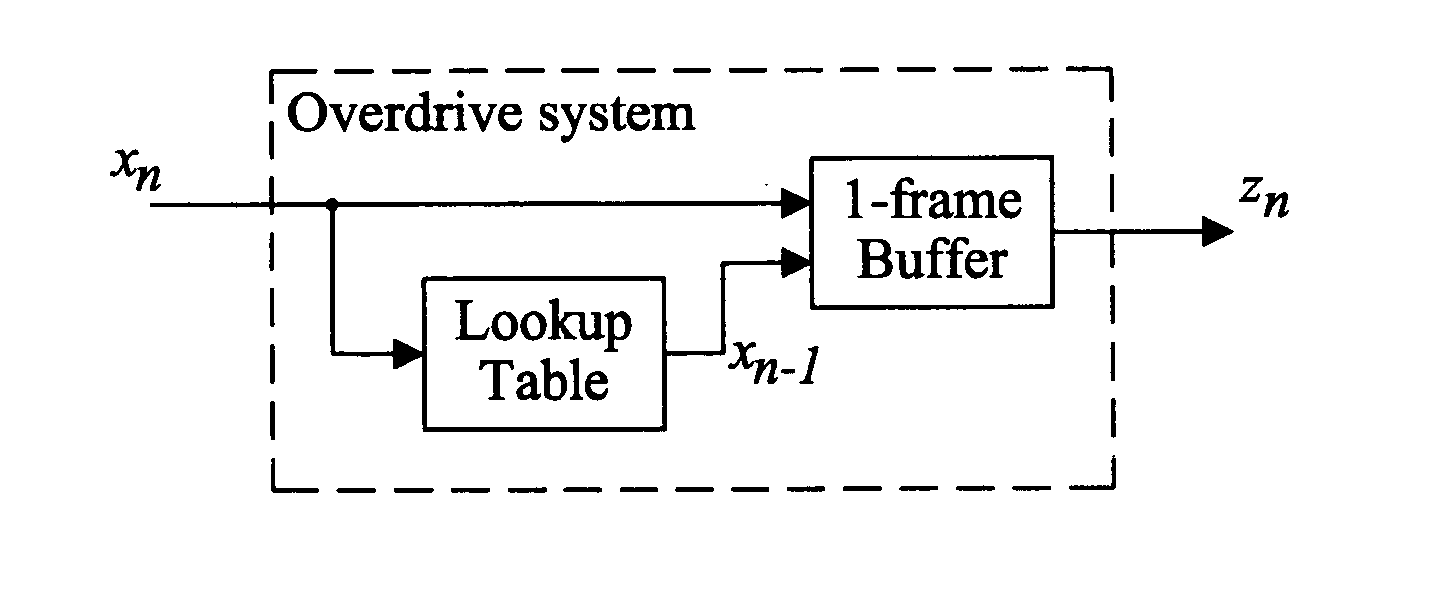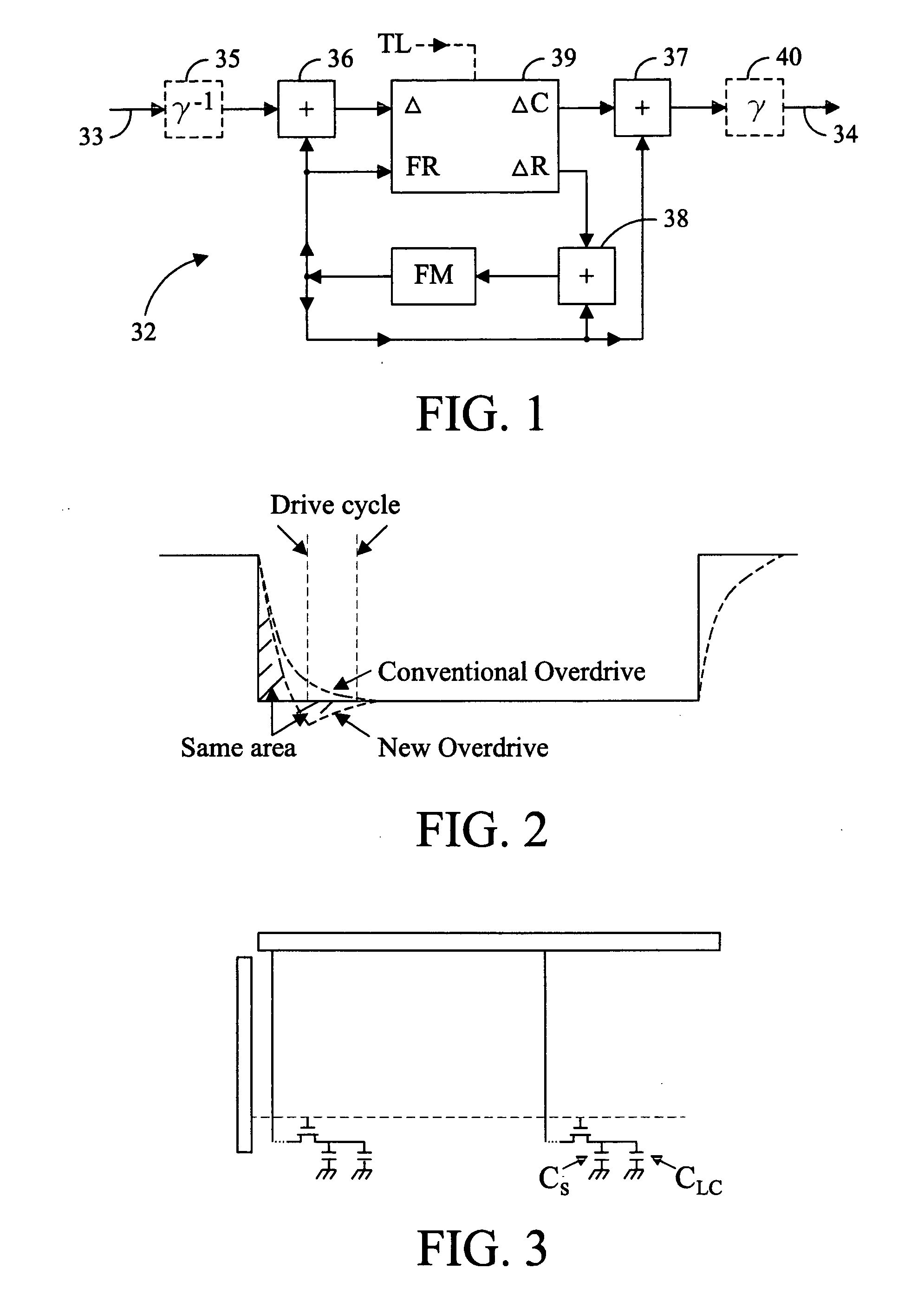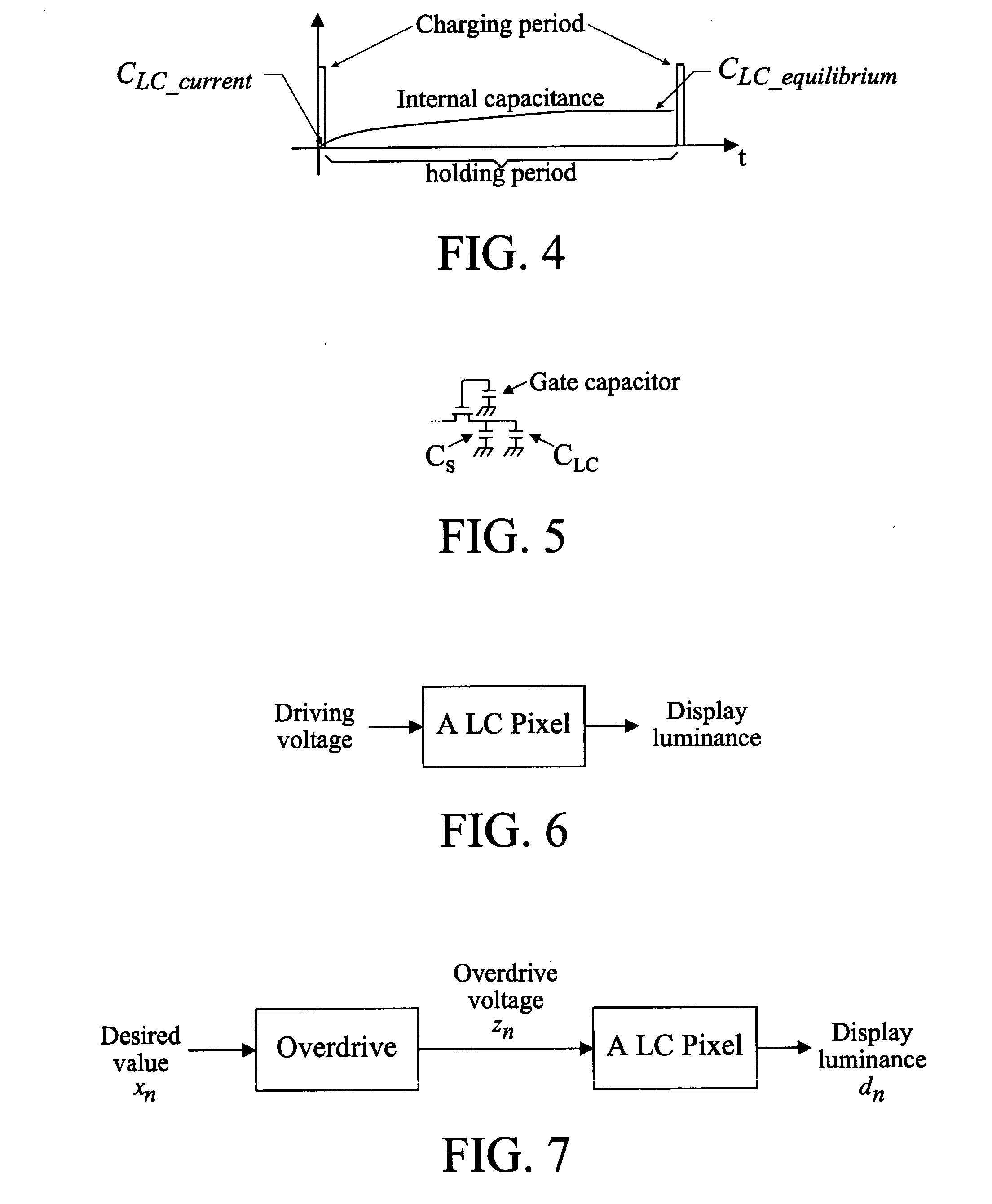System for displaying images on a display
- Summary
- Abstract
- Description
- Claims
- Application Information
AI Technical Summary
Problems solved by technology
Method used
Image
Examples
Embodiment Construction
By way of background, the LCD has many advantages over the traditional CRT (Cathode Ray Tube). Unfortunately, as previously described the LCD has more severe motion blurs than CRT. The motion blurs of LCD are primarily the result of three factors: (1) Slow movement / rotation of LC molecules in a pixel, resulting in slowly changing internal capacitance of a pixel and corresponding slow response of a pixel to its driving stimuli; (2) Insufficient driving voltage or charge applied to a LC pixel, because the actual charging period of a pixel in AM-LCD is very short; (3) Hold type drive and display scheme of LCD. In a CRT, a pixel is only lighted for a very short period once during a driving cycle, and is not lighted for the rest time, so CRT is called “impulse-type display.” In the LCD, however, a pixel is always lighted. The brightness level of a pixel is changed in a very short period once during a driving cycle, and the brightness level is not changed for the rest time, so LCD is ...
PUM
 Login to view more
Login to view more Abstract
Description
Claims
Application Information
 Login to view more
Login to view more - R&D Engineer
- R&D Manager
- IP Professional
- Industry Leading Data Capabilities
- Powerful AI technology
- Patent DNA Extraction
Browse by: Latest US Patents, China's latest patents, Technical Efficacy Thesaurus, Application Domain, Technology Topic.
© 2024 PatSnap. All rights reserved.Legal|Privacy policy|Modern Slavery Act Transparency Statement|Sitemap



